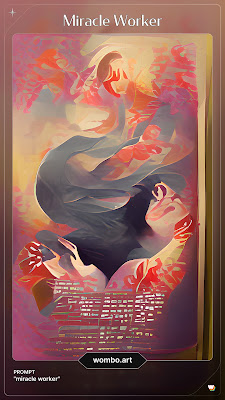How much magic should PCs expect to see in a medium-level magic setting? Thinking about this, and portraying it consistently in-play, supports the verisimilitude of a fantastic setting.
A small village is unlikely to have any magic. A medium or large village might have one or two trade magicians associated with the dominant local industry. A mining town could have a trade magician capable of subtly reinforcing the structure of the excavations, or magically detecting gas leaks; while a trade magician at a crossroads town between distant cities would be able to magically influence and guide the carrier pigeons that stop there to rest.
About 1 out of every 1000 sapient creatures is born with some latent magic they can use instinctively. Mechanically, this would be similar to a weaker form of the Magic Initiate Feat, giving the person one random cantrip that they can use a few times per short rest. While tame by adventuring standards, this will make them quite unusual (and possibly dangerous) in the eyes of ordinary people. Latent magic is most frequently a weakened form of sorcery, but cantrips could come from any class (for example, a particularly devout believer might become a minor miracle worker just through the ability to cast Guidance or Spare the Dying).
A small city or equivalent community may have a handful of NPC spellcasters with class levels ranging from 2 to 4. Their spells would focus on divination; among the schools of magic, it scales the best to society-wide problems. Some may also serve as abjurers or conjurers. Evokers, enchanters, and necromancers would be the least common, although cultures vary wildly, and some societies may find a place for these casters. A civilization might also have a similar number of leveled NPCs in martial or skill-based classes, but those will be much less conspicuous for purposes of determining how a society in fantasy adventure world differs from a mundane historical society of similar size.
A kingdom or large city state might have one or two casters at levels 5 to 8. While these are mid-power casters by PC standards, their power would be the apex of known magic to ordinary people. Third-level spells are a breakpoint; a wizard casting fireball a few times a day can turn the tide of small- to medium-sized conflicts almost on their own. A cleric able to cast Revivify would be a priceless asset for an assassination-prone ruler (and never more than a minute away from them, day or night – the ruler’s bedchambers would have an adjoined room in which the cleric slept just for this purpose).
Casters at level 9 and above are mostly absent from society. These people are pursuing objectives far removed from the mundane world. They should almost exclusively be either PCs or antagonists; they should almost never be NPCs without strong, proactive agendas of their own. Even if they have no known rivals, antagonists will seek out casters at such levels simply because their treasure (whether actual or merely rumored) makes them a desirable target.




No comments:
Post a Comment